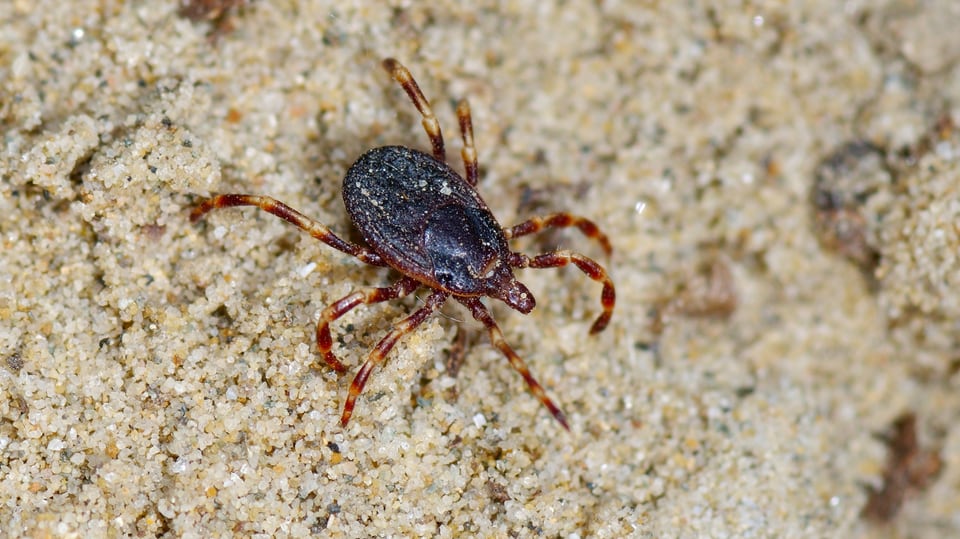Rigid hibernation, that was once. If there are no low temperatures, ticks are active all year round. Days with temperatures of 25 degrees or more are currently increasing. There are more ticks – and they bring new diseases with them. Science editor Katharina Bochsler explains what that means for us humans.
SRF: The ticks are always more comfortable with us, should we humans feel uncomfortable there?
Katharina Bochsler: We must at least be more attentive and regularly check our bodies for small black spots. Because the ticks are not only increasing, they are also spreading. Because of the rising temperatures, there are more and more ticks in places where it used to be colder – i.e. also in higher regions.
Ticks can transmit various infectious diseases. The tick vaccination only protects against tick-borne encephalitis. Is the vaccination still worth it?
In Switzerland, between 100 and 250 people contract tick-borne encephalitis, or TBE for short, an inflammation of the brain every year. Ascending trend. That may sound like little. But vaccination is worthwhile because FMSE can be very severe. The FMSE virus can attack the meninges and brain and cause impaired consciousness, epileptic seizures, breathing problems or permanent paralysis.
In contrast, Lyme disease, the most common tick-borne infection, is treated with antibiotics. It is a bacterial infection that affects joints and nerves, among other things.
Researchers from the University of Zurich recently discovered a new type of tick-borne virus in our country. How dangerous is it?
The new Alongshan virus is associated with typical cold symptoms such as fever, headache, and muscle or joint pain. A Chinese study also described more severe symptoms such as fatigue or depression.
The doctors are still very careful with conclusions here. They say the virus seems “associated” with these symptoms. It is not yet clear whether this is also the cause.
How widespread is the Alongshan virus in Switzerland?
It seems to be quite common. A study by the University of Zurich shows that it is even more common in ticks than the TBE virus. But that also means that if it is already so widespread without us noticing it, we are not at the beginning of a superdynamic spread.
More and more ticks from tropical areas can also be found in Europe. Why?
The tropical Hyalomma tick is well known. It is up to three times larger than our native ticks and, unlike our ticks, has eyes. It can see its victims up to ten meters away and track them for hundreds of meters.

Legend:
Hyalomma tick: The tropical tick grows up to three times larger than native ticks.
Shutterstock / aaltair
This tick can transmit the Crimean-Congo virus. How dangerous is this virus?
This is a very uncomfortable virus. It occurs mainly in Africa and Asia and in some regions of Europe. The first symptoms are high fever and pain, later drowsiness. In severe cases, internal organs are attacked. Internal bleeding can occur, a condition known as hemorrhagic fever. Mortality is up to 40 percent. For your peace of mind: the Hyalomma tick has aimed at beings larger than humans. She loves to bite horses.
The interview was conducted by Katrin Zöfel.
